#i did go into this wondering if he was referring to the knuckles playthrough.
Explore tagged Tumblr posts
Text
youtube
just discovered this video. you have only experienced 25% of sonic 3.
this was one of the most pure joys I've felt.
this guy demonstrates how you are supposed to play sonic. he does not claim it is the only way to play, but he shows examples of how much more fun and cool it becomes, and how it immediately contextualizes all the beginner's traps that Everyone stumbles with, all the things that make sonic games feel Bad-- they're all just beginner's traps, things to learn how to avoid, learn how to modulate yourself around. he shows that this applies even to 3D sonic (namely Sonic Heroes, but dammit it applies to all 3D sonic, and I go further and say it applies to all 'bad' games). and he argues against the meme that sonic is about going fast. because sonic is not about going fast. sonic is about speed modulation. slow down at a moment's notice, develop your sense of when to slow down. and this guy even fucking quotes david foster wallace in a beautiful way. it's like this video was waiting for me to watch it.
because this is just. absolutely correct. this is how we're supposed to look at video games. it's about finding the fun that was designed in them, not just accepting the meme answer of "why this game sucks." sonic taught me that.
I kinda suck at sonic 3 still, though I have played it enough times (and instinctively do a lot of his recommended things-- pay attention to score, ignore shields and emeralds and bonus stages, try to 'catch the bus' next time-- because they are actually self-evident) that I am receptive to all this and sometimes do cool tricks, I just don't play sonic 3 often enough to get to a great consistency. srb2 though. srb2, I play like this. as anyone who has seen me play it can attest. because it's. it's how you play sonic 3. srb2 follows the design principles of sonic 3.
god. I came out of watching this video feeling like I've just been encouraged to keep trying to live my life the way I believe in. "believe in yourself!"
anyway. wanted to share. 'cause I fucking love sonic.
#Youtube#i did go into this wondering if he was referring to the knuckles playthrough.#because like. fun fact. sonic 3 *is* actually substantially different if you play as knuckles.#the levels are different. there are different *bosses*.#but no. he addressed that very quickly in the video.#god. there's so many moments in the video where he demonstrates the sheer *elegance* of the insta-shield#moments where he's doing a jump and I'm feeling so anxious like 'oh no hes gonna take damage'#and then no. he. uses the insta-shield. and just bops on through in one swift movement.#and my jaw is agape and i feel like i just heard someone call me by name in my heart.#tremendous sense of comfort and 'welcome home' and 'you didnt even know you needed this.'#the sonic 3 insta-shield is. deep in my subconscious. and i *knew* it could do so much more than I was even aware of.
5 notes
·
View notes
Text
Sonic Villains: Sweet or Shite? - Part 7: METAL SONIC
It's been a while, but it's time for another Crusher review and analysis.
There are some villains I like. And there are some villains I don't like. But why do I feel about them the way I do? That's where this comes in.
This is a series of mine in which I go into slightly more detail about my thoughts on the villains in the Sonic the Hedgehog franchise, and why I think they either work well, or fall flat (or somewhere in-between). I'll be giving my stance on their designs, their personalities, and what they had to show for themselves in the game(s) they featured in. Keep in mind that these are just my own personal thoughts. Whether you agree or disagree, feel free to share your own thoughts and opinions! I don't bite. :>
Anyhow, for today's installment, we'll be putting the Stardust Speedway saxophones aside for a moment to discuss Dr. Eggman's notorious robotic copycat, who desperately wants to show us what he's made of: Metal Sonic.
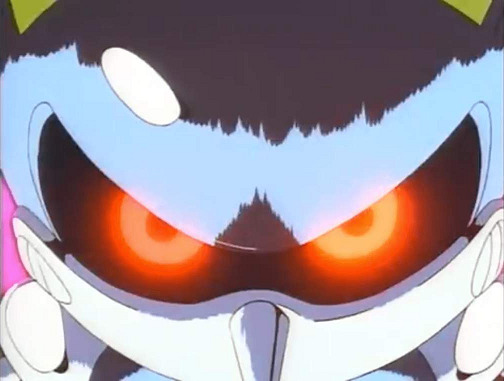
NOTE: While I will be taking several of Metal Sonic's non-game portrayals into account, this will NOT include his Sonic the Comic incarnation, as I feel that Fleetway's Metal - or Metallix, as he's called - is so vastly different in so many ways that I feel there's no point, whereas his other portrayals in non-game media are considerably more consistent for the most part.
The Gist: Being a criminal mastermind slash world conquerer in the making has its shortcomings, and for Dr. Eggman/Dr. Robotnik/The Bad Guy, that shortcoming came in the form of a plush-sized hedgehog who frequently wrecked his machines, foiled his plans, and - worst of all - talked back at him. This literal thorn on his side made the good doctor a very unhappy camper, but one day, his brilliant brain brought a brilliant breakthrough: Why not pit Sonic against himself?
During his then-new scheme to use the Time Stones of the Little Planet to conquer the world through time, Eggman worked tirelessly on his new idea to ensure it was just right. It couldn't be too slow. It couldn't be too bulky. It couldn't be too un-Sonic-like, for he vowed to assert his technological dominance by making a better Sonic than the real one. He wanted this to be his greatest creation yet, and he wasn't going to half-ass that objective.
The result was Metal Sonic, a marvel of industrial automation who established himself as fast as Sonic, as deadly as Sonic, and... not talkative, unlike Sonic. No wonder Eggman declared him the superior of the two.
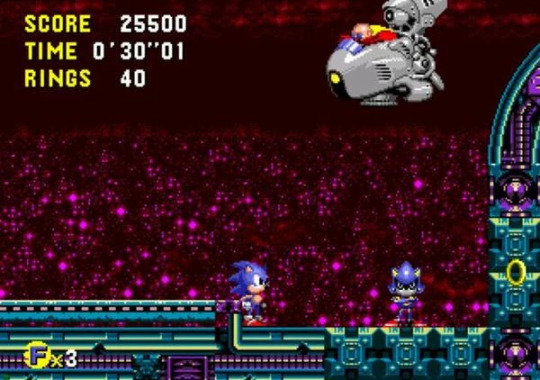
Eggman loves his creation so much that he’s willing to let him die if this goes wrong. That’s how you know he’s his favourite.
Sure enough, Eggman's efforts were not entirely in vain, as the blue droid was more than a match for Sonic in the speed department, as well as the "What's the best way to make it clear to Amy Rose that I'm not interested?" department via snatching up Sonic's pink hedgehog acquaintance, leaving her as the doctor's captive. Unfortunately however, despite giving Sonic the race of his life, Metal was not yet as quick in his reflexes as the genuine article was, meaning his initial reign of terror came to an abrupt end when he flew head-first into a wall, George of the Jungle-style. Eggman was devastated, except he wasn't, because he knew he could just rebuild and upgrade him. Which he did. Constantly.
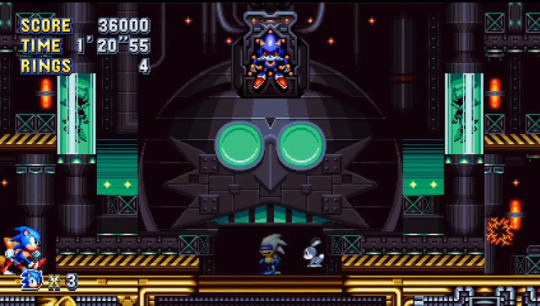
He also rebuilt these guys for some reason.
Since his debut in Sonic CD, Metal has went on to appear in a sizable number of games throughout the years, and he's made some personal appearances in a few other continuities as well. Most of these appearances simply have him show up, attack Sonic and other heroes for a bit, then get his ass handed to him. Some of those ass-kickings even came with a tasty amount of hue hues. But every now and then, they'll have him do something more, the most famous example being Sonic Heroes, in which he took over Eggman's army by force and went on his own little crusade to gain everyone's data and become Metal GodJesus, all the while proving himself the real Sonic the Hedgehog... by doing a lot of things the real Sonic the Hedgehog would never do. (This general concept would reappear in the IDW comics, though he did not betray Eggman that time around.)
Overall though, Metal is generally considered to be a welcome face whenever he makes an appearance... when he’s not dreaded for being the biggest roadblock in Fighters.
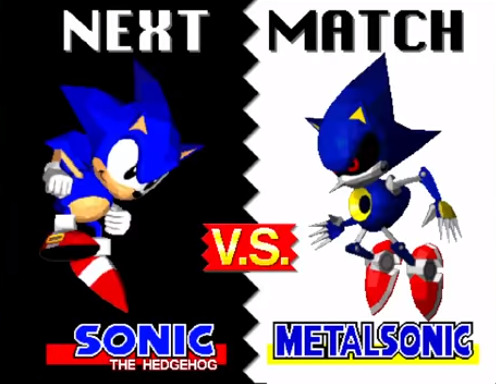
“Well that’s the end of the playthrough, make sure to like, comment, subscribe.”
The Design: What is there to say about Metal Sonic’s design? It’s cool, it’s ominous, it’s sleek, it’s stylish, and it holds a palpable aura of dangerous badassitude while still fitting perfectly with the design philosophy of this franchise. Truly, Metal’s design alone makes him one of the all-time greats of the Eggman repertoire, and it's easy to see why the scientist is particularly proud of this one.
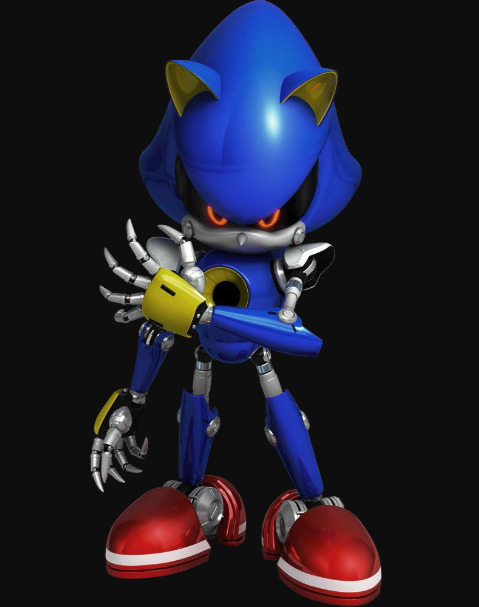
He’s the robot your robot could crash into a wall like.
He’s had a few transformations over the years though. In Knuckles Chaotix, he turned into a ginormous monstrosity commonly referred to by fans as Metal Sonic Kai, who terrified many juniors back in the day due to making the inexcusable error of not being blue. The bad ending might have also affected them.
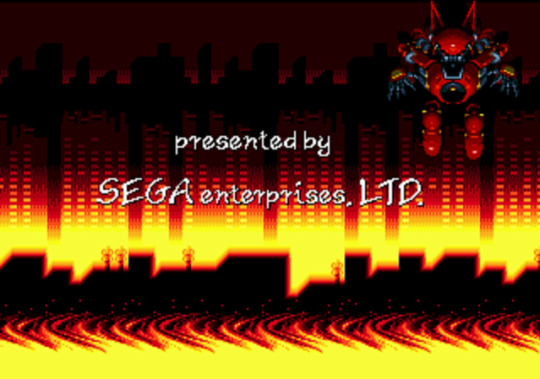
E for Everyone.
Luckily, Classic Metal got the right idea two decades later, and kept his blue colour scheme when the Phantom Ruby brought the form back in Sonic Mania Plus. As for Modern Metal, he had a brief life (or lives, if you count IDW) as Neo Metal Sonic, who - despite being made with the intention to be a darker, cooler, more serious iteration of the character - went the complete opposite direction by looking less like a frightening metal monarch, and more like a shonen anime’s midnight seizure.
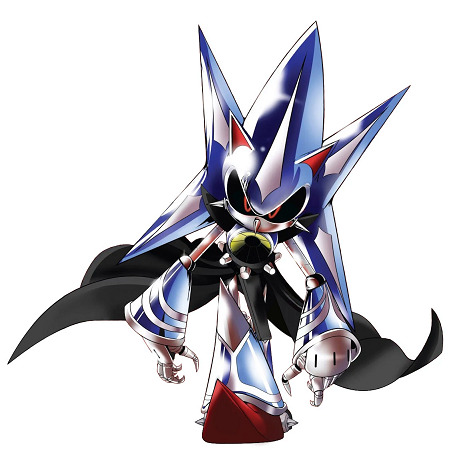
Look at this fucking thing.
Elf shoes. Ripped skirt. Starfish haircut. Vaguely phallic strap in the appropriate area. Regular Metal may have a semi-cutesy look even in his more dangerous iterations, but at least he doesn't come off as a compensating son who doesn't quite know how to come out to his judgemental father, which is more than I can say for whatever the hell this is supposed to be. Is this really meant to be a more intimidating design? A more badass design...?
Then, as if this wasn’t ridiculous enough for Metal already, they had him transform even further into MechaGodzilla Metal Overlord, a goliath made from the remains of the Egg Fleet, with a side order of spikes and artist’s regret.
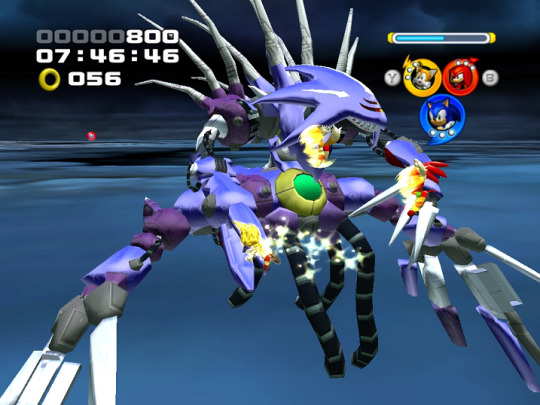
"Sonic, I was created for the sole purpose of destroying you... but I can never seem to defeat you... That is why I purchased Freddie Mercury's wardrobe with my own hands!"
Said form also returned in the IDW comic, rechristened Master Overlord, who traded the clawed wings and the flamethrower in exchange for symmetrical hands and a more simplistic body structure, at the expense of looking even more like a children’s toy.
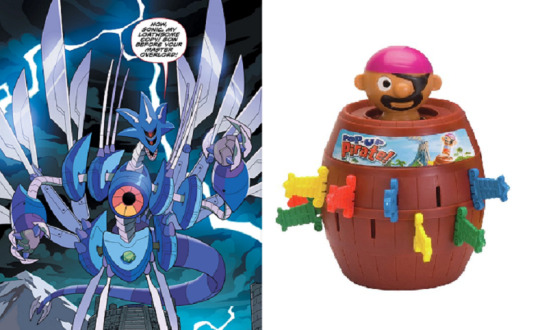
Needless to say, Metal's had some... interesting transformations over the years. But his original look will always remain iconic, and rightly so.
The Personality: Metal Sonic's personality is harder to specify compared to other characters in the series, because his kill-first ask-later demeanour in tandem with his usual muteness means we see him most of the time as little more than a Sonic-shaped extension of Eggman's will. That said however, there have been deeper glimpses here and there into what makes his mechanical mind tick.
The most obvious thing to note is that Metal holds the very un-Sonic trait of not having time for nonsense. Sure, he might not be above taunting his organic counterpart in a likeminded way occasionally, but that aside, he's generally a pretty serious and humorless individual, a stark contrast to his creator and master that nonetheless works in the latter's favor, as the realisation that the goofy manchild Eggman of all people made this thing helps shoot down the myth that the rotund madman is all talk.
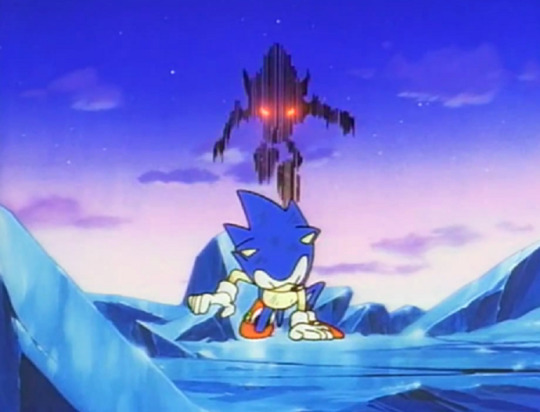
"He's behind you!" "Shut it wee man, this is a serious play."
Then there's his insanity, by means of identity crisis. It's not known if this was something that was there from the beginning, or if it's somethng that developed and worsened with each defeat, but at some point in his life, Metal convinced himself that despite literally being made with the intention of exterminating the actual Sonic, he himself was in fact the actual Sonic, and that the actual actual Sonic that already existed prior to his inception was in fact the actual Not-Sonic (or a faker, as would be used to describe a certain other lookalike). This belief has caused him to do a bunch of crazy stuff of dubious logic, and don't try to question him on his reasoning, lest you want him to cut you open like a Terry's Chocolate Orange.
His relationship with Eggman is something of an enigma. While his teenage phase betrayal in Heroes is probably the most mainstream evidence of how he feels about his master, it's easy to forget that this was the exception, not the rule. In nearly every other appearance before and since then, Metal has shown nothing but stone cold loyalty towards the doctor and his cause. Even in IDW, when he regained his Neo form and basically did everything he could to remind everyone that Heroes was a thing that existed, he did it that time around for the purpose of finding his master, and helping to restore his empire. A far cry from Neo's first attempt, when he was ranting and raving about how he should have the empire.
Thus, I can only conclude that while his Sonic-esque AI may cause him to get a little reckless, he remains genuinely devoted to his creator outside of his brief cocaine rush in Heroes... and Free Riders, but I don't think anyone knew what was going on in that one. I don't think he knew what was going on in that one.
But perhaps most surprisingly of all - according to the OVA at least - despite all his black-hearted ways, he is still capable of good, as evidenced when he saved the President and the legendary Old Man Owl from dying a fiery death. Whether it's an inherent part of his own nature, or whether it's a side-effect of his Sonic programming, isn't fully clear... but either way, he might want to make sure Eggman doesn't find out about it.
The Execution: Metal Sonic's execution is a complicated case, because there's a dissonance between when he's merely an obstacle for the good guys, and when they've tried to make him more than that.
When he's merely Eggman's instrument of evildoing, he does the job nicely. Sometimes his appearances can be underwhelming depending on the game (read: Sonic 4), but he usually provides a memorable scuffle when it's time for him to put up his dukes. Even if half of those are actually races.
When he aims for bigger, on the other hand? Well...
I've already joked about Neo Metal Sonic's design, but don't be fooled, for his ridiculous fashion sense is merely one part of my beef with the overall concept of Neo. Simply put, everything about Neo Metal Sonic goes against everything that makes this particular character work.
Ranting, monologuing, and running his mouth off does not work for Metal Sonic.
Gathering everyone's data with the intention of becoming Metal Everyone does not work for Metal Sonic.
Transforming into a goddamn dragon does not work for Metal Sonic. (I can let Metal Sonic Kai slide since despite being bigger and more monstrous, you can still recognise it as Metal Sonic specifically. Colour scheme aside, Metal Overlord/Master Overlord might as well be a random monster entirely.)
These ideas aren't necessarily bad on their own. They could work for another villain, or another Eggman minion. But for Metal Sonic specifically? It just doesn't work at all, and while some may be willing to handwave it as the result of Metal's insanity, I firmly believe it's more than possible to establish and delve into his inner madness in ways that DON'T contradict almost everything about him. A character being insane is not an excuse for turning them into a completely different character altogether, nor is it an excuse for just plain handling them in a shitty manner. By all means, I'm all for giving Metal a bigger role, and I'm all for expanding his character and his dynamic... just not like this.
Metal doesn't need to do all that in order to be effective and leave an impression. His portrayal in the OVA confirms that. OVA Metal was everything that Metal was known for at the time: straightforward, loyal, and silent, bar one line towards the end. And he still managed to be a very intriguing antagonist who served as a believably major threat, and who gave Sonic the fight of his life, and thus earned the hedgehog's disgruntled ire and his begrudging respect. That is the Metal that writers should aspire to. That is the essence of what makes that character.
So, despite everything, I still highly enjoy Metal Sonic when he's Metal Sonic, and not Something Vaguely Shaped Like Metal Sonic. He's stumbled a bit over the years, but when he's done right, he's always an eventful burst of fun, and ultimately, my fondness for those portrayals overrides my disgust towards elf shoes. And I'd love to see them expand on his dynamic with Eggman, which a certain well-liked series of shorts has thankfully given us a small taste of. Here's hoping the future will follow up on it...
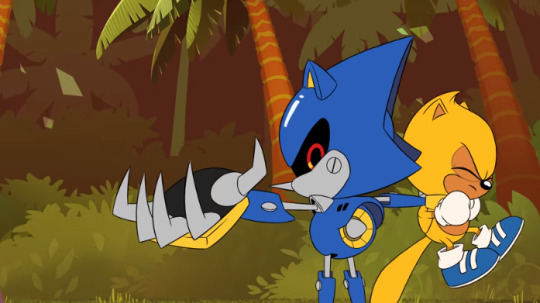
“Now, if you may be so generous, hand over the Emerald slowly, or else I'm afraid your little friend will face the consequen-ooooowwwww my FUCKING wrist.”
Crusher Gives Metal Sonic a: Thumbs Up! (and Neo Metal Sonic a: Thumbs Down!)
108 notes
·
View notes
Text
I thought we had a deal, Deus Ex: Mankind Divided

:Warning: Ending spoilers within. That said, you’ll probably like this game a lot more if you go in knowing how it ends.
Deus Ex: Mankind Divided was one of those games I bought the entire Digital Deluxe version of just because it was on sale for the price of like three Doritos bags, and then let collect more than a year’s worth of digital dust on my digital credenza. Then 2019 came, and it was just non-stop brutal action games. First there was Resident Evil 2, which was oppressive enough by default, but then I tried (and failed) to S-rank it to get the infinite ammo cheat; then there was Devil May Cry 5, which wasn’t that brutal until I spent like four weeks trying to clear the Bloody Palace (and never did); then there was Sekiro, which was brutal through and through, the fucking sixth grade dance of gaming. Finally I was sick of trying so much and decided to play a nice, coddling Western game—the kind that caters to the whims of each player, respecting your choices and rooting for your success. There were a few candidates, but Deus Ex: Mankind Divided won out because cyberpunk.
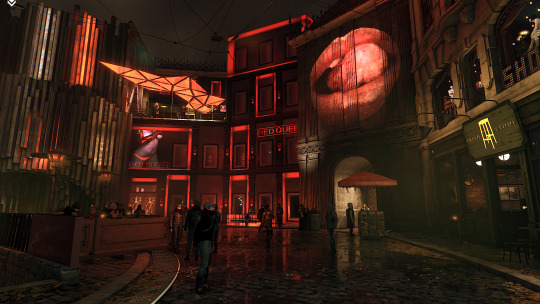
For ninety-five percent of my playthrough, DEMD was really scratching the itch. Protagonist Adam Jensen isn’t just a vehicle for power fantasy, he’s a damned sports car—sleek, powerful, and highly deck-outable with custom features. The entire game is designed to facilitate player whimsy, letting you approach tasks in many substantially different ways. Sometimes fifteen minutes of firefighting or white-knuckled stealth can be circumvented by simply moving a refrigerator out of the way, revealing a ventilation shaft. There’s almost always a ventilation shaft. Sometimes you can hack machine gun turrets to mow down the enemies before they even know you’re there. Your guns are also customizable with different scopes and ammo types, and Adam has a variety of different built-in death implements that all do kind of the same thing in different cool-looking ways.
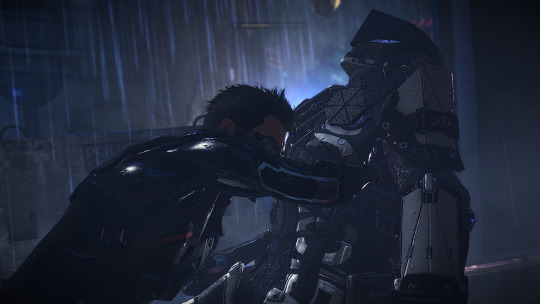
This is also one of those games where you can save virtually anywhere at any time, so even in those rare moments that I struggled, I was able to save-scum my way to success. Some might find all that coddling abhorrent, but after so many months of getting my ass kicked, this felt like exactly what I was looking for.
Freedom and player choice also play heavily into the narrative—sometimes the game prompts you to select Adam’s dialogue or make a decision that affects the subsequent course of events. These choices contributed to my sense of agency, but also never made me feel like I’d missed out on something big or made a mistake. It felt like there were no wrong decisions. Until the end.
DEMD’s been out a few years now, so there are already plenty of articles and forum threads out there talking about the game’s disappointing ending. It has a few different permutations depending on your preceding actions (more on that shortly), but all versions of the ending are abrupt, poorly realized, and leave way too many loose ends. These are widespread critiques that I agree with, but they’re not what I’m here to complain about. I’m here to complain about how the game determines which ending you get.

Here’s what happens: After lots and lots of stealth across a huge facility, you find your boss, a pretty likeable guy, somehow dying—presumably the terrorists you’re there to stop got him with their guns or bludgeons. He says some sentimental stuff and then slowly closes his eyes and punches out. Then the game poses one of its trademark choices. I don’t remember exactly how they worded the options, but it was something to the effect of “Go after the main bad guy” or “Save a bunch of people who are about to die horribly.” It didn’t even feel like a real choice. I of course went for the dying people. I saved them, and then to my surprise the game prompted me to go after the main bad guy anyway. “A-ha,” I said. “So it wasn’ta real choice.” I commended the game for letting me both have and eat my cake as I started navigating toward the waypoint on my map. But I kept finding the intuitive paths blocked. In the game’s defense, I was relying solely on the map in the pause menu, as I’d disabled the in-game map and waypoint as suggested by ex-Kotaku writer Kirk Hamilton in his “Tips for Playing” article. Up to that point, I’d been very happy with this decision, but in hindsight I wonder if it would’ve preventing about thirty minutes of aimless wandering in this final mission. This was the first and only time I got lost in DEMD, and it was annoying to have it happen so close to the finish line. But what was really unforgivable was what happened when I finally got to my destination.
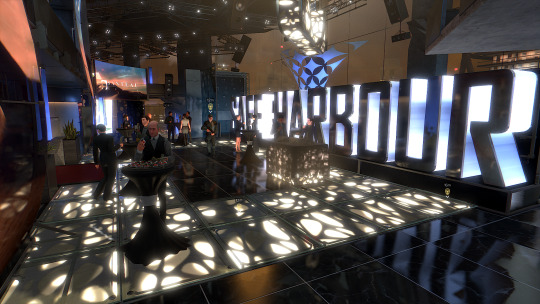
A cutscene commenced. The main bad guy gazed wistfully out the window at two skyscrapers and issues a brief soliloquy: “Why have you taken so long? I can no longer wait. If only you’d come sooner, Jensen.” Something like that. Then he hit a button on his remote detonator and those two skyscrapers across the way imploded in a very overt 9/11 reference that actually made me tear up a little bit, not so much from sadness as from rehashed shock and terror. What’d I do?!I thought. I thought we had a deal.
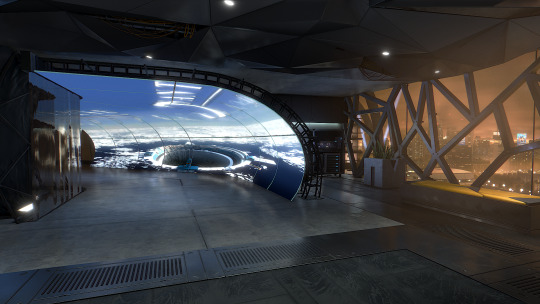
The deal, in my mind, was that I could play however I wanted and still succeed. Also, that the game would give me a painfully clear heads up anytime something important was going to happen. DEMD constantly recaps itself, giving you concise plot beats when you start up the game, during load screens, and in the Missions tab of your menu. As someone who habitually tunes out plot, I really appreciated this. Despite the game’s complicated web of political intrigue and interconnected factions, I managed to follow along with the story much better than I typically do. Any time I felt a little lost, the Missions tab would catch me up in less than a minute. Now I found myself having failed at something I hadn’t even realized I was on the hook for. As the rest of the crummy ending played out, I just sat there, stunned by this betrayal.
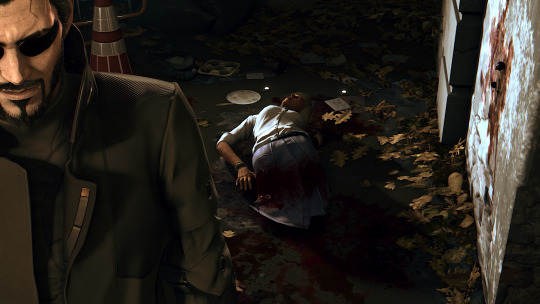
Afterward, I googled it. Apparently, when your boss dies and you have to choose which path to take, the game secretly starts a ten-minute timer. Even though it presents you with a binary choice, if you want the good ending, you actually have to accomplish both tasks within ten minutes. Bear in mind that at this point, the game has established countless times that there is no player-agnostic clock. It’s not Dead Rising. It works like other open-world sandbox games. You’re free to dick around cyber-Prague at your leisure, even when something urgent is waiting for you at the next mission initiation point. So if they’re going to suddenly introduce a time limit, they have a moral obligation to tell you about it!
Even worse, I also learned that I was supposed to have received either an antidote or a bomb jammer from a decision I’d made much earlier in the game, and that these were supposed to aid me in beating said time limit. In fact, the antidote would have also let me save my dying boss, who apparently had been poisoned, not attacked(???). Somehow, I didn’t seem to haveeitheritem. Maybe I sold whichever one I’d gotten in an absent-minded moment, but that seems like the kind of thing the game would have warned me about, the way it warned me that gun upgrades couldn’t be undone.
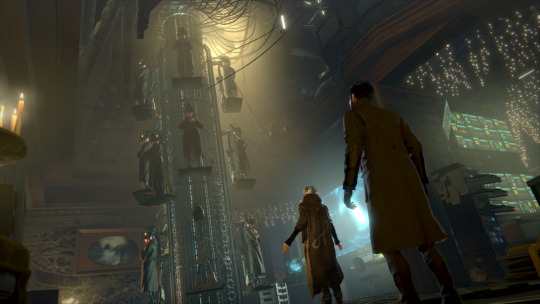
It’s also shitty that this phantom time limit kicks in at the place in the game where you’re most likely to get lost (I’m quite confident this is universally true), and right after the game spends like two hours conditioning you to take your time and take out each terrorist one by one. Maybe I should’ve been paying more attention, but I thought in this game of all games, I didn’t have to. I thought we had a deal.
I really enjoyed Deus Ex: Mankind Divided, but it irritates me to think I could have averted 9/11 Part 2 and the death of my boss if they’d simply displayed a clock onscreen.
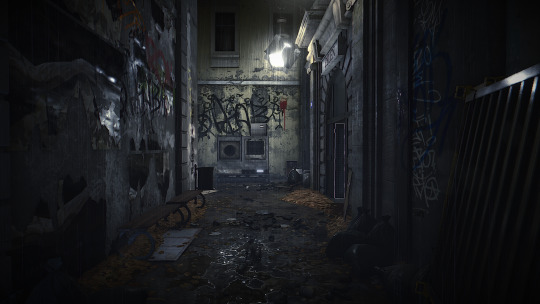
2 notes
·
View notes